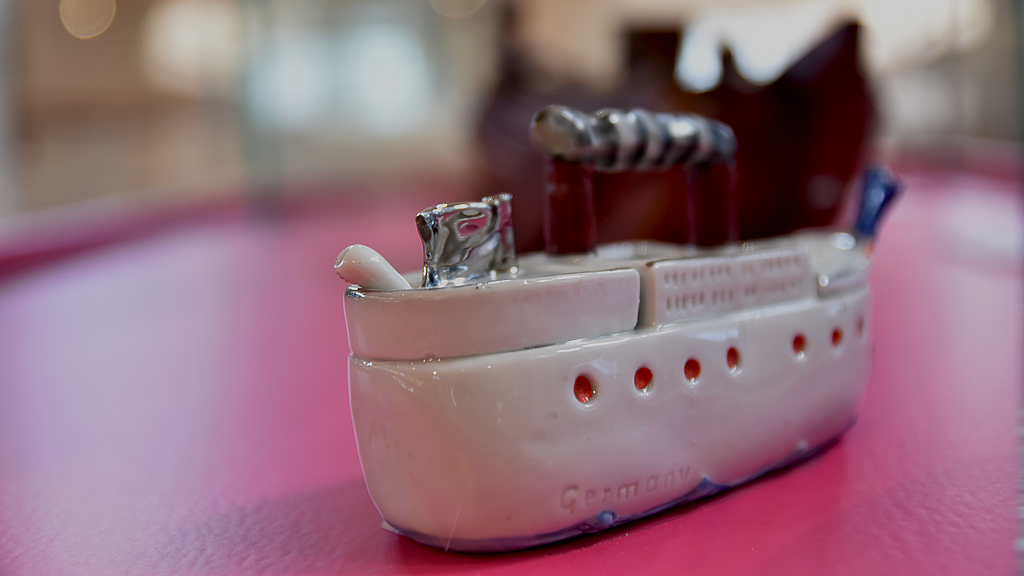Cocoa, Coffee, Tobacco - Intoxicants in the Past
Ports have served as transshipment points for narcotics of all kinds for centuries. In a joint project, students, historians from the University of Oldenburg and the German Maritime Museum (DSM) / Leibniz Institute of Maritime History investigated the routes taken by coffee, tobacco and the like and how their consumption changed. The exhibition "Cocoa, Coffee, Tobacco - Intoxicants in the Past" will celebrate a digital opening on YouTube and Facebook on Saturday, April 3, starting at 11:30 am. Afterwards, the results will be on display in the Cog Hall until October 3, 2021.
In 2020, major ports around the world saw record sales of illicit drugs. Cocoa, coffee, and tobacco are no longer among them, but four hundred years ago they were smuggled and traded in ports as mind-expanding substances. In the collaborative project Intoxicating Spaces: The Impact of New Intoxicants on Urban Spaces in Europe 1600 to 1850, researchers from the University of Oldenburg, together with three other European universities, are investigating how the consumption of new intoxicants such as cocoa, tea, coffee, sugar, and tobacco gave rise to new public spaces and shaped new forms of sociability during this period.
The researchers analyze the role of major port cities such as Amsterdam, Hamburg, London, and Stockholm in the first flowering of global trade. Also in focus are the ever-changing attitudes toward intoxicant use and the often exploitative structures and trade relationships that shaped the production, trade, and consumption of mind-expanding substances.
Historians Prof. Dr. Dagmar Freist and Dr. Gabrielle Robilliard from the University of Oldenburg have been working with schools, museums, NGOs, and international organizations over the course of the project, which runs from 2019 to 2021.
Pupils from Oldenburg researched the topic at the University of Oldenburg and the German Maritime Museum. The German Maritime Museum will show their ideas and creative contributions in the exhibition "Cocoa, Coffee, Tobacco - Intoxicants in the Past" starting in April in the Kogge Hall.
"What is special about this project is that students* have linked the results of an ongoing EU research project with our exhibits and implemented them artistically. In this way, the public can look at the topic of historical intoxicants from the perspective of young people and see the museum objects in a new light," says Birte Stüve, Head of Education and Outreach at the German Maritime Museum.
Students* from Oldenburg's Cäcilienschule (high school) created an interactive map depicting the transport of coffee and cocoa in the 19th century. Viewers learn from historical characters - a pharmacist and a coffee house owner - how the goods were transported and sold. The group from the Altes Gymnasium Oldenburg (Oldenburg Old High School) devoted themselves to the question of how the consumption of tobacco, coffee and cocoa changed since the 18th century and wrote their findings in a fictional diary. In it, 18-year-old Joe reports on his visit to a coffee house.
The students made him up as a fictional historical character. By the way, women were not allowed to enter this kind of gastronomy at that time. "We would like to thank the Oldenburg students and the teachers Sabine Conrad from the Altes Gymnasium and Ina Maria Goldbach from the Gymnasium Cäcilienschule for their perseverance. They have successfully completed the project under the difficult conditions of the pandemic and with a small but fine exhibition," says Stüve.
The exhibition "Cocoa, Coffee, Tobacco - Intoxicants in the Past" can be visited at the German Maritime Museum from April until October 3. Interested visitors should check the German Maritime Museum website in advance for current visiting rules.
The show is sponsored by the European network Humanities in the European Research Area (HERA)


